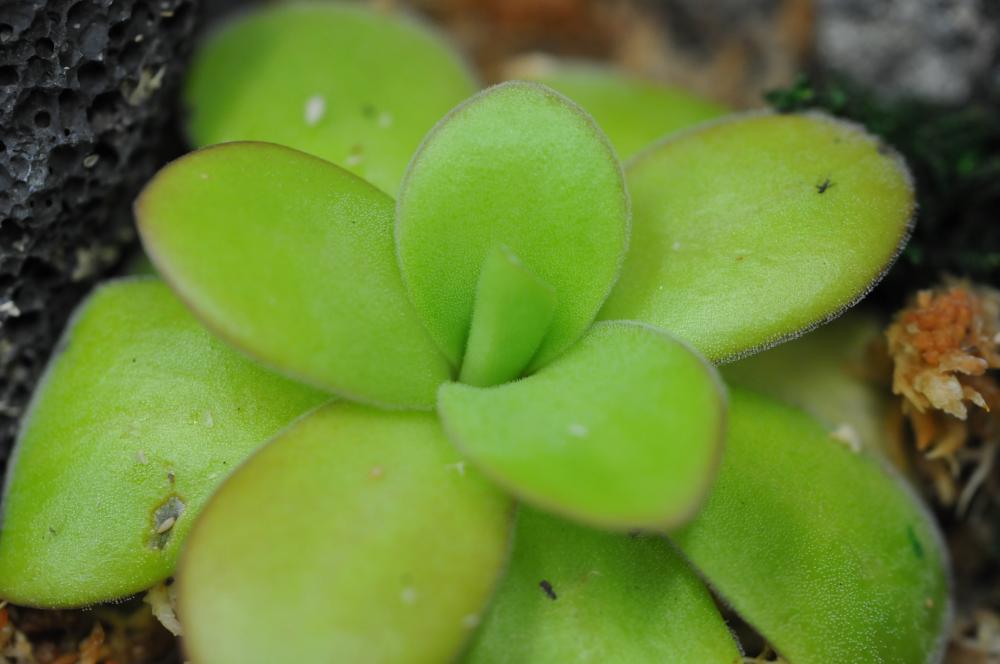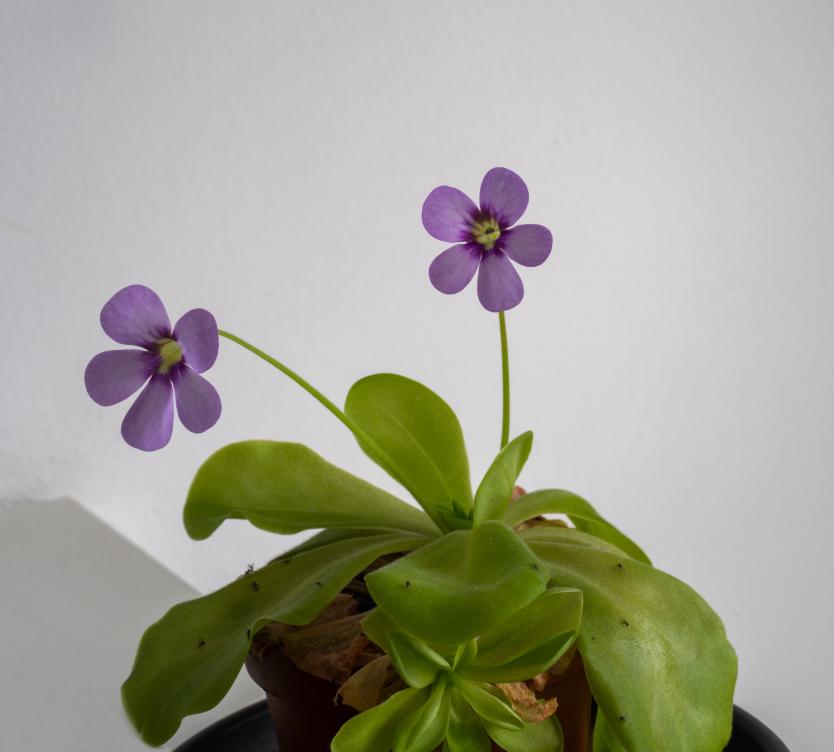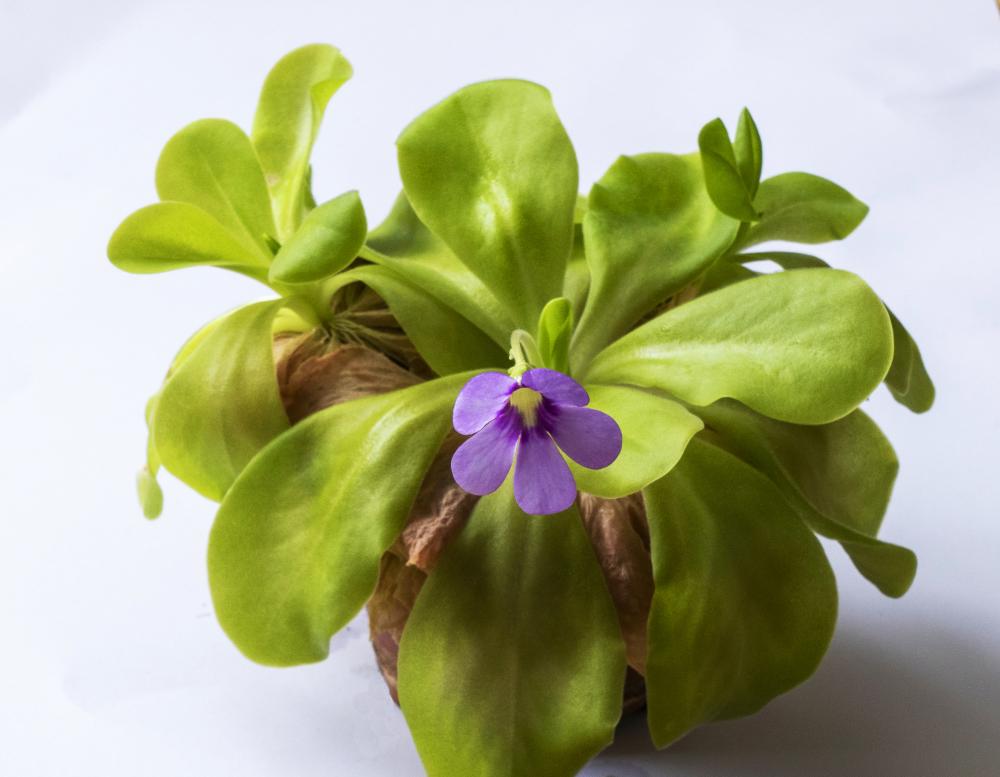Carnivorous Butterwort Care – How To Grow And Care For Pinguicula
Carnivorous butterwort is an acquired taste. That’s to say it’s not for everyone. Some people would sit and watch the plant trap and devour insects all day long. Others would find the whole spectacle too graphic and gory for their sensibilities. But you don’t have to be a gore buff to want to grow the pinguicula in your garden.
You could simply have an insect infestation problem and mosquitoes or houseflies stand between you and enjoying a quiet summer evening. In that case, I would recommend a few carnivorous butterwort plants placed strategically around the garden and on window sills to exterminate the flying bugs without prejudice.
But how different is growing a carnivorous plant different from a vegetarian plant? As it turns out, there’s not much difference between the two. Butterworts still need a growing medium, water, sunlight, and yes, feeding too. The plant doesn’t always get lucky with the hunt and could go for weeks without trapping a single bug. So you’ll need to chip in and feed it with its favorite food every once in a while. Read more to know how to grow and care for pinguicula.
All About Butterwort
The butterwort or pinguicula is a fascinating plant that resorts to trapping and digesting insects to supplement its diet. The plant evolved this ability out of necessity since its original habitat is often poor and lacks the basic nutrients necessary for the growth of plants.
As perennial plants, butterworts thrive in the soil where both moisture and nitrogen are scarce. And in general, the carnivorous plants can be grouped into tropical species and temperate species. The tropical varieties don’t become dormant in the winter, instead, they keep blooming in the summer and winter months. The temperate species of the plant experience dormancy where the leaves drop and the roots shrink. The plant itself stops growing during this period and only develops resting buds that wait for the spring to start growing again.
But since the plant relies on the bugs it traps for most of its nutrients, why does it need a root system at all? The only purpose of the root ball is to anchor the plant in the growing medium. The thin roots sometimes absorb moisture from the soil but only if the carnivorous hunter has failed to land a prey and is suffering from dehydration.
That leaves the foliage as the most important part of the plant. The leaves of the butterwort come in different colors depending on the variety. They could be light green or pinkish. The surface of the leaves is smooth and meaty. Some varieties have leaves that grow up to 12 inches long. But the beauty of the leaves is deceptive. Because the upper surface of the leaf is usually covered with an adhesive that traps any insect that lands there. Then droplets of a digestive liquid emerge and quickly liquidate the body of the trapped insect.
Butterwort Varieties
The 80 or so butterwort varieties are scattered all over the globe. But the majority are native to South America. North America is a native habitat to about 9 butterwort species in all. Here are some varieties that you can grow in your garden or as indoor plants.
- Pinguicula gypsicola: The variety native to Mexico looks like a sea monster rising from the depths. It has leaves that look like the tentacles of an octopus. The yellow leaves grow out of a light green center and reach about 3 inches long. It also has pinkish blooms that grow on top of long stalks away from the trapping leaves.
- Pinguicula moranensis: A popular variety that originally hails from Guatemala and Mexico. It grows well both indoors and outdoors and you can keep it in a pot on a window sill or in a terrarium. Its light green leaves grow to about 8 inches in the spring and summer. But during dormancy, the leaves shrink to about 2 inches at most.
- Pinguicula gigantea: The name is a dead giveaway. The mature plant reaches about one foot in diameter. The light green leaves have sticky glands on both sides which means the plant can trap any insect that crawls anywhere on the leaves. The leaves get smaller during dormancy and the flowers are violet with pink shades.
How to Grow Butterwort
One advantage to growing butterwort is that you have many options to start the plant and they all have a high success rate. Dividing the plant is done in the spring when the rosette splits naturally into two or three rosettes. Of course, you’ll need an established plant for that.
You can also clone the plant by pulling a mature leaf and placing it on top of a growing medium with the sticky surface up. It will start developing roots in a short time. But the easiest way to grow butterwort when you don’t have a mature plant to divide or cut its leaves is from seeds. Here’s how to do it.
- Fill a small pot with sphagnum moss halfway then fill the rest of the pot with chopped sphagnum.
- If you can’t find chopped sphagnum, use a pair of scissors to cut regular sphagnum into small pieces.
- Sprinkle the seeds on the top of the chopped sphagnum and add enough water to get the growing medium moist.
- Cover the top of the pot with a transparent plastic sheet and keep it in place with a rubber band.
- Punch some holes in the plastic sheet to allow air in but still allow humidity buildup inside of the pot.
- Place the pot under bright light but avoid exposing the seeds to direct sunlight.
- Sprinkle water on the growing medium to keep it moist until the seeds germinate.
- After about 2 weeks, the seeds will germinate.
- When the roots are a couple of inches long and the seedlings grow at least one set of true leaves, you can transplant each seedling to its own pot.
Butterwort Care
For a plant that catches its food from the air, caring for the butterwort is no different from any other plant you grow in the garden or indoors. However, since the pinguicula is a little particular about the growing medium, you’ll need to pay a little more attention to where you plant the carnivorous butterwort.
Soil
When it comes to butterwort, you can’t use regular soil. As we mentioned earlier, the roots of the plant are too flimsy to grow in heavy or even loamy soil. Sandy soil alone is also inadequate for this plant. And you have four options when it comes to the type of growing medium to use.
- Peat Moss and Sand: You can use a mix of peat moss and sand or replace the sand with perlite. Use them in equal portions to create a good medium for the sensitive roots of the plant. Water it regularly to keep it moist but not let it go overly dry.
- Sphagnum: This is the same medium you use to start butterwort from seeds. Sphagnum alone is ideal for pinguicula as long as you don’t allow it to become too wet or too acidic. You can place the pot in a tray full of water but remove the tray once every 4 weeks to prevent mold and bacteria buildup.
- Orchid Potting Mix: You can make this handy mix at home. You’ll need pumice, perlite, and bark. Then top them off with sphagnum. Fill a pot with the mix and place it in a shallow tray full of water. It will keep the mix moist.
- Ping Pot: The idea behind using live moss as a growing medium for butterwort is to create a natural landscape for the plant. Of course, you’ll need to keep the moss alive by keeping it moist at all times. You can also add granite or limestone for decorations and to help the moss thrive.
Water
If you thought providing the right growing medium to butterwort plants was a hassle, wait until you hear about the water. For one thing, you can’t use tap water. It’s full of chemicals that would burn the flimsy roots and kill the plant in a short time. Instead, you should use pure water or collect rainwater and use it. The plant needs a lot of water to keep the growing medium moist at all times. However, avoid watering the rosette from above since that leads to fungal infections and bacterial diseases. Also, keep in mind that some varieties need calcium and alkaline water rich in minerals. So check which variety you’re growing and adjust the type of water you use accordingly.
Light
Whether you’re growing a tropical or temperate species, butterwort still needs plenty of light. Place the pot on a window sill facing the north or west that gets the morning light or afternoon light. Avoid exposing the plant to the direct sunlight of the mid-day since it could damage the leaves. If you’re growing a perennial variety and your winters are overcast with little or no sunlight, place the plant under a LED light and keep it on for about 18 hours a day. The higher the wattage the better especially if you keep the pot in a large room where the light gets dispersed.
Feeding
Just because the butterwort hunts bugs and feeds on their flesh doesn’t mean that the carnivorous plant doesn’t need feeding. And the type of food you have to provide is no different from the plant’s regular food. In other words, you’ll have to drop a few insects on the leaves of the plant to digest. However, you’ll rarely need to resort to that unless you live in a perfectly clean environment. Pinguicula plants will feed on small bugs and mites that scurry around on the surface of the pot. Eventually, they’ll step on the leaves and become an easy meal for the patient plant. If you find the plant looking out of sorts, then you can help it with a few mosquitoes or houseflies. Or simply place it near another plant where aphids and scale are abundant. You’ll be doing both plants a solid.
Pests and Diseases
You might have noticed that pests, far from being a problem for the butterwort plants, are in fact a blessing. So you don’t have to worry about bugs causing any damage to the plant. If anything, it’s the bugs that need to watch out for this predator.
But it’s a different story with diseases. Unfortunately, pinguicula doesn’t feed on bacteria and fungi and is prone to some diseases including basal collapse, yellowing leaves, deformed leaves, root burn, and mold buildup.
Basal collapse is the result of stem rot due to overwatering. When the stem rots, the whole plant will wither and die very quickly. So watch your watering habits and allow the top 2 inches of the growing medium to dry out between irrigations.
Yellowing leaves are caused by too much watering as well. The leaves will turn yellow and start dropping. As for deformed leaves, these are due to exposure to too much sunlight. Move the plant away from the window sill in the afternoon to protect the leaves.
Root burn happens when the plant is watered with tap water. The chemicals can damage the roots quickly leading to the demise of the plant. So use pure water or rainwater.
Mold buildup is the result of too much water and too little light. Cut down on watering and allow the growing medium to dry out. Also, use a grow light or move the pot to a window that gets enough morning sunlight to get rid of the mold.


